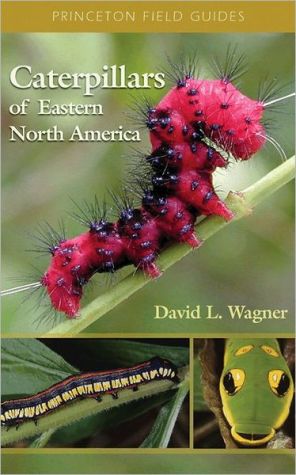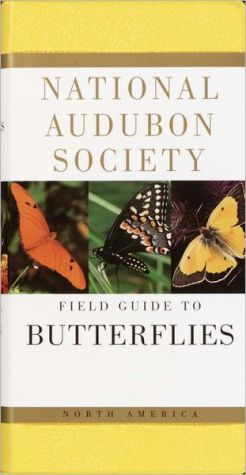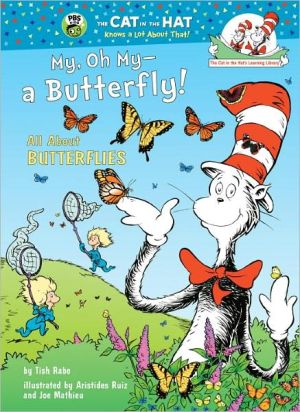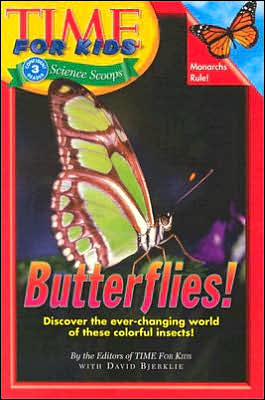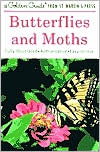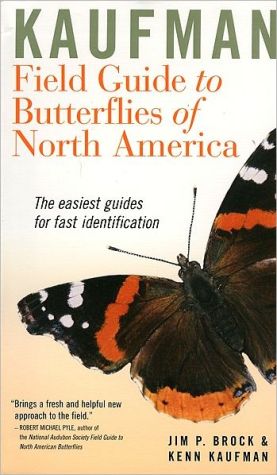Caterpillars of Eastern North America: A Guide to Identification and Natural History
This lavishly illustrated guide will enable you to identify the caterpillars of nearly 700 butterflies and moths found east of the Mississippi. The more than 1,200 color photographs and two dozen line drawings include numerous exceptionally striking images. The giant silk moths, tiger moths, and many other species covered include forest pests, common garden guests, economically important species, and of course, the Mescal Worm and Mexican Jumping Bean caterpillars. Full-page species accounts...
Search in google:
"This book adds to our understanding of caterpillars by providing a means to identify common caterpillars via excellent photos of early stages that are associated with photos of adults, and through snippets of natural history text for each species. This alone will generate enthusiasm for caterpillars among professional biologists and general readers interested in lepidoptera."—Philip J. DeVries, Department of Biological Sciences, University of New Orleans, author of The Butterflies of Costa Rica and Their Natural History, Volumes I and II"This book is an important contribution to the existing knowledge on the lepidoptera of North America, one that should spawn the gathering of new information. It fills a glaring gap in the popular literature on the continent's fauna."—Steven M. Roble, Staff Zoologist, Virginia Department of Conservation and Recreation, Division of Natural Heritage John W. Brown - Proceeds of the Entomological Society of Washington In general, the images of caterpillars and adults in this book are superb, the layout is attractive and easy to use, and the small-size format allows it to slip easily into a backpack for use in the field. I strongly recommend this book to anyone interested in Lepidoptera, but it should also find a place on the bookshelf of anyone interested in natural history, plant-insect interactions, or management of Lepidoptera pests (macros, anyway). It also will be very handy for anyone with inquisitive children (of any age) that pose that frequently asked question—What will it turn into?
CATERPILLARS of EASTERN NORTH AMERICA\ A GUIDE TO IDENTIFICATION AND NATURAL HISTORY \ \ By DAVID L. WAGNER \ Princeton University Press\ Copyright © 2005 Princeton University Press\ All right reserved.\ ISBN: 978-0-691-12144-4 \ \ \ Chapter One\ INTRODUCTION \ Caterpillars, the larvae of butterflies and moths (order Lepidoptera), are the last group of large, common, backyard creatures for which there are no comprehensive field guides. Every week of the growing season I am asked to identify caterpillars and answer questions about them: What is this? What does it eat? Is it a pest? Is it harming my house or garden? What will it turn into? How might I raise it? This guide will help you answer these questions for nearly all of the caterpillars likely to be encountered east of the Mississippi. Full species accounts with an image of the adult insect are given for 383 butterflies and moths; an additional 210 species are illustrated, but only briefly discussed (no adult images are provided); and 100 species are diagnosed, but not figured either as a caterpillar or adult. Included among these are forest pests, common garden guests, economically important species, especially handsome caterpillars, and others known to draw public interest. Of course, the Mescal Worm and Mexican Jumping Bean caterpillars are here. Of the 593 species for which a photograph has been provided, 114 are butterflies, far more than their relative diversity or frequency of encounter would justify, but because of their popularity with gardeners, children, and other naturalists, their numbers are well represented here. The species accounts are salted with additional images that illustrate earlier instars, closely related species, common parasitoids, interesting behaviors, and other aspects of caterpillar biology. While the area of emphasis is the East, this guide should be useful across the whole of southern Canada, portions of the Pacific Northwest, and at the generic level for most of the United States.\ The North American diversity of Lepidoptera is immense. Close to 13,000 moth and butterfly species have been reported north of the Mexican border (Hodges et al. 1983, Poole 1996). Some 5,000 of these occur east of the Mississippi. Approximately 55% are "microlepidopterans," i.e., smaller moths, many of which are concealed feeders, fashioning and feeding within leaf shelters or boring into stems, fruits, and seeds. It is their counterparts, the "macrolepidopterans," that are the focus of this work. Most macrolepidopterans are exposed or "external" feeders that have distinctive forms, coloration, and patterning that readily allow for their identification. In some ways it is remarkable that a comprehensive field guide to such organisms has not appeared before now.\ Caterpillars are enormously important in terrestrial food webs. They are the preferred grub, so to speak, for the nestlings of most of our songbirds. One piggish American Robin is reported to have devoured twice its own body mass in larvae over a 24-hour period. Spring would be silent in a forest without caterpillars. Caterpillars yield moths, which are important prey items in the diets of bats, martins, flycatchers, goatsuckers, and other vertebrates. Many caterpillars are important macrodecomposers, shredding fallen leaves, tunneling into dead wood, and consuming fallen fruits, thereby accelerating nutrient cycling processes. The silk in our sheets, parachutes, ties, lingerie, scarves, and other clothing comes from the Silkworm (Bombyx mori) and related moths. Adult moths and butterflies are important pollinators. Many of our most fragrant flowers, e.g., gardenia, narcissus, and jasmine, are moth-pollinated species. Hornworms or hawk moths are thought to be primary pollinators for about 10% of the tree species in tropical forests. Deserts also have many moth-pollinated plants. Indigenous peoples from every continent include caterpillars in their diets. Mopane caterpillars (Imbrasia belina, Family Saturniidae) are harvested and eaten by the millions in Botswana, Zimbabwe, and elsewhere in southern Africa (inset). Silkworm (Bombyx mori) pupae are regarded as a delicacy in China.\ Caterpillars play a major, although indirect, role in all of our lives by exerting a chronic force on plants to evolve mechanisms to discourage herbivores. Plants are immobile. Caterpillars are omnipresent. If a plant is to survive through evolutionary time, it must have defenses, many of which are chemical: latexes, alkaloids, terpenes, tannins, and myriad others. Many of these compounds have medicinal (opium, salicylic acid = aspirin, digitalis, and taxol), culinary (tea, coffee, pepper, cinnamon, paprika, cumin, and other spices), and commercial (rubber and turpentine) values. And should you have an appreciation for fine red wines, be assured that the tannins that give the wine its body and character are there for an entirely different reason. Tannins are digestibility reducers manufactured by many woody plants that cross-link proteins and make them chemically unavailable to the organisms that ingest them. Thus, if only in a roundabout way, life would be considerably less rich and less interesting (and much less flavorful) without caterpillars.\ MORPHOLOGY\ An insect's body is divided into three parts: head, thorax, and abdomen (Fig. 1). A diagnostic feature shared by all true caterpillars is an inverted Y-shaped line that extends down from the top of the head (Fig. 2). The lower arms delimit the frontal triangle or frons. Below the frons is a narrow plate, the clypeus, which runs between the two short antennae. The labrum or upper lip is positioned below the clypeus-its medial notch engages the leaf edge while the caterpillar is feeding. The caterpillar's six lateral eyes or stemmata are arranged, more or less, in a semicircle, with the fifth stemma usually offset toward the antenna. Located centrally on the lower side of the head is the labial spinneret (inset), the elongate spigot through which a caterpillar's silk is discharged. (Silk issues from the body as a liquid but turns to a solid fiber upon exposure to air.)\ The caterpillar's three thoracic segments bear true legs, each of which terminates in a simple claw. Extending across the top of the first thoracic segment (T1) is a variously developed dorsal plate called the prothoracic shield (Fig. 1). Most of a caterpillar's mass is in its ten abdominal segments (A1-A10). Prolegs, the familiar, soft, hook-bearing legs of the abdomen, arise from the underside of abdominal segments three to six (A3-A6) and ten (A10) (Fig. 1). The number and relative sizes of the prolegs are often a clue to a caterpillar's identity. The prolegs bear a series of minute hooklets, called crochets (Figs 3, 4), that are used by the caterpillar to hold on to the substrate. Crochets, both their number and arrangement, are routinely used in keys by lepidopterists, although their use in this guide has been downplayed because they are difficult to view in living caterpillars. Structures of the last abdominal segment (A10) are often helpful in identification. The top of the segment bears a gumdrop-shaped anal plate (Fig. 1), which is sometimes pointed or otherwise modified. In inchworms the anus on A10 is flanked by the paraprocts and subtended by the hypoproct (Fig. 5).\ Useful landmarks for orientation on the caterpillar's body include the spiracles and prolegs. Spiracles, the respiratory pores on the side of the caterpillar's body, are located on the first thoracic segment (T1) and the first eight abdominal segments (A1-A8) (Fig. 1). The spiracles on T1 and A8 are often twice the size of those that intervene. The midabdominal prolegs, as noted above, usually start on A3 and run to A6. In those moths with a reduced complement of prolegs, it is usually the anterior pairs that are reduced in size or absent.\ For consistency, I use the term stripe for those markings that run parallel to the body axis and extend along a number of segments. An approximate terminology has been adopted to convey where the stripes are located: moving from the top of the body (dorsum) to the bottom (venter) are the middorsal, addorsal, subdorsal, supraspiracular, spiracular, subspiracular, subventral, adventral, and midventral stripes (Fig. 6). I use these terms to define relative position on a hypothetical cylinder (and ignore for the purposes of this guide technical arguments of homology that might be based, for example, on studies of larval development). Markings that wrap around the caterpillar's body are called bands or rings. The generic term line is used for shorter markings regardless of their orientation.\ The size, arrangement, and number of setae on the head and body, or "chaetotaxy," have considerable significance in lepidopteran classification and identification. In this work I have largely avoided using chaetotaxy because most setae are difficult to see without the aid of a dissecting microscope. Nevertheless, there are several situations in the guide where specific setae are mentioned to assure a definitive identification. Setal nomenclature is easily learned-all the names are derived from a seta's position on the body (Fig. 7).\ A glossary with numerous biological, morphological, and other specialized terms is provided at the end of this guide.\ TELLING MACROS FROM MICROS\ This book, with the exception of the slug caterpillars, smoky moths, flannel moths, and a few others, is focused on macrolepidopteran caterpillars. Macrolepidopterans are believed to represent a monophyletic group of "higher" Lepidoptera, most which feed exposed or externally on plants. Exceptions abound: some bore, a few form shelters, others are subterranean, etc. Many macrolepidopteran families have the crochets arranged in a line that runs parallel to the body axis. The majority of species of Lepidoptera and the overwhelming majority of individuals that you will encounter in nature are microlepidopterans (micros). Microlepidopterans are so diverse and heterogeneous as to defy ready characterization-most lepidopterists learn to recognize micros family by family until they garner a gestalt for their great variety. The lion's share of micros feed internally in leaf shelters, mines, galls, or tunnel into tissues. They tend to be rather simplified; warts, knobs, abundant secondary setae, spines, and other ornamentation are only occasionally evident. A significant portion of the common families has a well-differentiated prothoracic shield and rather plain thoracic and abdominal coloration. Microlepidopteran prolegs are often proportionately more slender and elongated. Their crochets are often arranged in a circle. One way to distinguish the two is to poke the caterpillar in question-if it wriggles backward with great rapidity it is certainly a micro (although if it does not wriggle backward, it can still be a micro since there are many micro families that do not respond in this way). This trick is especially helpful when you run across young macros that are too small to examine without a microscope.\ NOT QUITE CATERPILLARS\ The immature stages of wasps (especially sawflies) and some flies resemble caterpillars. Sawfly larvae are easily recognized by examining their heads or proleg complement. They have a single lateral eye (not six as in most Lepidoptera) and they lack a prominent protuberant labial spinneret. Most true caterpillars have four pairs of midabdominal prolegs (on A3-A6) or fewer; sawflies have five or more pairs (these usually beginning on A2). The prolegs of butterflies and moths bear numerous crochets; crochets are absent in sawflies, fly maggots, beetle larvae, and other caterpillarlike insects with fleshy abdominal legs. Some flower fly (family Syrphidae) larvae resemble caterpillars, but they lack a head capsule and always bear a pair of closely set spiracles at the rear of the body. Beetle larvae have from zero to six lateral eyes and lack a labial spinneret but are not likely to be confused with any of the caterpillars in this guide.\ CATERPILLAR LIFE CYCLE\ All Lepidoptera have complete metamorphosis with four distinct life forms: the egg, larva or caterpillar, pupa or chrysalis, and adult. The egg stage typically lasts around 6-14 days, but it can be considerably longer in those species that pass the winter in this stage or for eggs laid in early spring when the temperatures may remain cool for weeks. The larval stage is the growth phase-some Lepidoptera increase their mass by more than 1,000 times as a caterpillar. To accommodate this growth, a caterpillar must molt, shedding its cuticle (integument or skin). The larva between molts is called an instar. Thus the first instar ecloses from the egg, the last or ultimate instar fashions the cocoon or cell in which pupation will take place, or, in the case of butterflies and some moths, spins the button of silk to which the chrysalis will attach. The majority of Lepidoptera have five or six instars. In some, like the Gypsy Moth (Lymantria dispar), the female caterpillar passes through an additional instar. Slug caterpillars (Limacodidae) go through as many as eight or nine instars. First instars may be dispersive, "ballooning" with the wind on strands of silk as do some of our inchworms and tussock moths or simply wandering great distances as do many catocaline noctuids (e.g., underwings). Prior to each molt the larva ceases feeding and becomes inactive-the next instar's head capsule may be observed within the prothorax of the quiescent, pre-molt larva. After the caterpillar sheds its old integument, it may take several hours before its new cuticle is hardened and it is again ready to feed. When the exact number of an instar is not known, it is often convenient to refer to these with terms such as middle, antepenultimate (second to last), penultimate (next to last), and/or ultimate instars.\ The pupa, though sedentary, is a stage of great internal turmoil and transformation. Nearly all the larval tissues and organs-the eyes, mouthparts, legs, silk glands, muscles, etc.-will be digested and reorganized into the body of the adult insect. Prior to pupation the larva loses much of its patterning and its length decreases. In addition, the gut is evacuated. To the unaware, these caterpillars may appear diseased and close to death. Most moths pupate in a cocoon or cell fashioned in litter or soil. The naked pupa of true butterflies and a few moths is called a chrysalis; it tends to be sculptured, patterned, and may have a girdle of silk about the body near the juncture of the thorax and abdomen. In many species, the pupal stage lasts only 7-14 days while in others it may last many months, or in rare cases, two or more years. In those species that have facultative (partial) or staggered emergence, it is usually the pupal stage that holds in a state of suspended animation from one season to the next. But the record-holders here are the prepupal larvae of Bogus Yucca Moths (Prodoxus) of the American Southwest, which may remain viable and emerge as adults more than 30 years after they have ceased feeding!\ Some species cycle through an entire generation in as few as four to five weeks-the Monarch being a familiar example. The longest life cycle belongs to the Arctic Woolly-bear (Gynaephora groenlandica), which routinely takes 14 years to complete its development. In Connecticut I would guess that our fauna is more or less divided between those species that have only one generation per year and those that have two; a small fraction have more than two broods and a handful take two full years to mature. Second, third, and additional broods are often facultative, meaning that some individuals in the population continue to emerge and reproduce while others enter diapause after a generation or two. (Diapause is a state of suspended development that normally coincides with a environmentally stressful period such as winter or the hot, dry portions of summer.) Members of facultative generations either continue to cycle through until the autumn brood(s) enter diapause or perish in inclement weather. Southward, most species add generations or broods. In southern Florida and Texas many moths and butterflies cycle through generations year-round.\ (Continues...)\ \ \ \ \ Excerpted from CATERPILLARS of EASTERN NORTH AMERICA by DAVID L. WAGNER Copyright © 2005 by Princeton University Press. Excerpted by permission.\ All rights reserved. No part of this excerpt may be reproduced or reprinted without permission in writing from the publisher.\ Excerpts are provided by Dial-A-Book Inc. solely for the personal use of visitors to this web site. \ \
Contents Preface....................4Acknowledgments....................5Photographic and Artwork Credits....................6PART ONE Introductory Sections....................8Introduction....................8Morphology....................9Telling Macros from Micros....................11Not Quite Caterpillars....................12Caterpillar Life Cycle....................12Finding Caterpillars....................14Where to Search....................15When to Search....................16Rearing Caterpillars....................16Overwintering Larvae and Pupae....................18Starting with Eggs....................19Sexing Adults....................20Feeding Females....................22Natural Enemies....................22Survival Strategies....................24Preserving Larvae....................26Photography....................27Collecting, Vouchering, and Conservation....................29Caterpillar Projects for Schools, Nature Centers, and Universities....................30Using This Guide....................32Classification and Nomenclature....................33Helpful Websites....................34PART TWO Family and Species Accounts....................35Slug Caterpillars-Limacodidae....................35Flannel Moths-Megalopygidae....................53Smoky Moths-Zygaenidae....................57Skippers-Hesperiidae....................58Swallowtails-Papilionidae....................76Whites and Sulphurs-Pieridae....................83Hairstreaks, Blues, Coppers, and Metalmarks-Lycaenidae....................91Brushfoots-Nymphalidae....................108Hooktip and Thyatirine Moths-Drepanidae....................139Loopers, Inchworms, and Spanworms-Geometridae....................143Scoopwings-Uraniidae....................216Sack-bearers-Mimallonidae....................217True Silkworm and Apatelodine Moths-Bombycidae....................219Tent Caterpillars and Lappet Moths-Lasiocampidae....................222Giant Silkworm and Royal Moths-Saturniidae....................229Hornworms (Sphinx or Hawk Moths)-Sphingidae....................247Prominents-Notodontidae....................279Owlets, Cutworms, Underwings, and Kin-Noctuidae....................321Pantheas and Yellowhorns-Pantheidae....................439Tussock Caterpillars-Lymantriidae....................443Nolids-Nolidae....................454Tiger, Lichen, and Wasp Moths-Arctiidae....................457Two Essentials....................484PART THREE Glossary....................486Helpful and Cited Literature....................489Foodplant Index....................495Taxonomic and Subject Index....................502
\ New York Times\ - Andy Newman\ A lusciously photographed book generally regarded as the most comprehensive field guide ever to caterpillars, as opposed to their better-documented adult forms—moths and butterflies. . . . In the book, the fruit of a decade's research, Dr. Wagner . . . argues passionately that creeping things can be every bit as mesmerizing and transporting as those that flit and dart in the air.\ \ \ \ \ Wildlife Activist\ - Robert E. Hoopes\ This is a wonderful field guide for those interested in studying the fascinating world of caterpillars in the backyard, parks, woods and fields around us.\ \ \ Annals of the Entomological Society of America\ - J.B. Whitfield\ As a teacher of the university courses in insect biology and classification, I will use this book heavily; yet it is attractive and simply written enough to be much more widely appealing for children, teachers, and indeed anyone with interest in naturally history. David Wagner is to be congratulated for communicating his knowledge of the Lepidoptera so clearly and appealingly to the rest of us.\ \ \ \ \ Proceeds of the Entomological Society of Washington\ - John W. Brown\ In general, the images of caterpillars and adults in this book are superb, the layout is attractive and easy to use, and the small-size format allows it to slip easily into a backpack for use in the field. I strongly recommend this book to anyone interested in Lepidoptera, but it should also find a place on the bookshelf of anyone interested in natural history, plant-insect interactions, or management of Lepidoptera pests (macros, anyway). It also will be very handy for anyone with inquisitive children (of any age) that pose that frequently asked question—What will it turn into?\ \ \ \ \ New York TimesA lusciously photographed book generally regarded as the most comprehensive field guide ever to caterpillars, as opposed to their better-documented adult forms—moths and butterflies. . . . In the book, the fruit of a decade's research, Dr. Wagner . . . argues passionately that creeping things can be every bit as mesmerizing and transporting as those that flit and dart in the air.\ — Andy Newman\ \ \ \ \ Wildlife ActivistThis is a wonderful field guide for those interested in studying the fascinating world of caterpillars in the backyard, parks, woods and fields around us.\ — Robert E. Hoopes\ \ \ \ \ Annals of the Entomological Society of AmericaAs a teacher of the university courses in insect biology and classification, I will use this book heavily; yet it is attractive and simply written enough to be much more widely appealing for children, teachers, and indeed anyone with interest in naturally history. David Wagner is to be congratulated for communicating his knowledge of the Lepidoptera so clearly and appealingly to the rest of us.\ — J.B. Whitfield\ \ \ \ \ Proceeds of the Entomological Society of WashingtonIn general, the images of caterpillars and adults in this book are superb, the layout is attractive and easy to use, and the small-size format allows it to slip easily into a backpack for use in the field. I strongly recommend this book to anyone interested in Lepidoptera, but it should also find a place on the bookshelf of anyone interested in natural history, plant-insect interactions, or management of Lepidoptera pests (macros, anyway). It also will be very handy for anyone with inquisitive children (of any age) that pose that frequently asked question—What will it turn into?\ — John W. Brown\ \ \ \ \ Biology DigestThis is a fine, easy-to-use book that is sure to be in the hands of everyone interested in exploring their own gardens or nearby vacant lots, written to be understood by middle-school students as well as professionals. Very highly recommended!\ \ \ \ \ The Quarterly Review of BiologyDavid Wagner has produced a user-friendly field guide that goes well beyond anything else available.\ \
